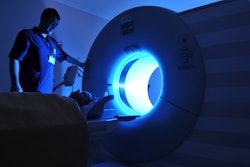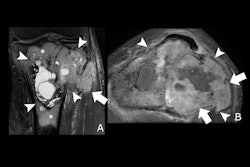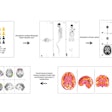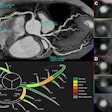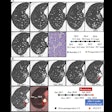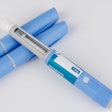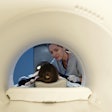A dual-parameter ultralow-dose CT protocol may offer a safer alternative for monitoring bone mineral density, according to findings published June 6 in Academic Radiology.
The protocol reduced radiation exposure by over 90% while having acceptable image quality and diagnostic accuracy for classifying osteoporosis, wrote a team led by Meng Zhang from the Guangdong Provincial Hospital of Chinese Medicine in China.
“Our dual-parameter optimization approach not only ensures diagnostic reliability but also minimizes radiation risks, establishing a new reference for osteoporosis screening,” Zhang and colleagues wrote.
Quantitative CT protocols are used to accurately assess bone mineral density and diagnose osteoporosis. However, the researchers pointed out that these protocols lead to high radiation exposure.
In its prospective study, Zhang and colleagues evaluated a novel dual-parameter ultralow-dose CT protocol with the goal of assessing bone mineral density in the lumbar spine. It compared the results to those of standard-dose CT, focusing on radiation dose, image quality, and diagnostic performance.
Final analysis included 245 patients who underwent lumbar surgery and paired pre- and postoperative CT scans. The latter included standard dosage at 120 kV/250 mAs and ultralow dosage of 100 kV/30 mAs. Also, for the study, two senior musculoskeletal radiologists measured image quality by using a 5-point Likert scale, with a score of 3 meaning acceptable quality.
When measured against standard care, ultralow-dose CT led to a 92.5% reduction in radiation dose.
Comparison between standard, ultralow-dose CT protocols for measuring bone mineral density | |||
Measure | Standard protocol | Ultralow-dose protocol | p-value |
Effective dose | 11.68 mSv | 0.88 mSv | < 0.001 |
Volumetric CT dose index | 25.66 mGy | 1.93 mGy | < 0.001 |
Standard-dose CT was superior to the ultralow-dose protocol in terms of objective and subjective image quality (p = 0.001 and < 0.001, respectively). However, the interpreting radiologists gave an average score of 3.92 to the ultralow-dose CT images. This protocol also led to acceptable agreement among the radiologists, with an interobserver intraclass correlation coefficient of 0.73.
Ultralow-dose CT also showed comparable performance to standard CT for patient subpopulations, including when measuring for gender, age, and osteoporosis subgroups (p > 0.05 for all).
Finally, ultralow-dose CT achieved high marks among the patient subpopulations. This included an area under the curve (AUC) range of 0.986 to 0.996. The team also reported a sensitivity range of 94.7% to 100% and a specificity range of 95.7% to 98%.
Despite surgery possibly presenting a confounding factor in the study, the authors highlighted that “the specific surgical approaches in this study are unlikely to have significantly impacted the quantitative bone mineral density assessments.”
Still, they called for future studies to evaluate the potential impact of surgical interventions on bone mineral density.
The full study can be found here.







